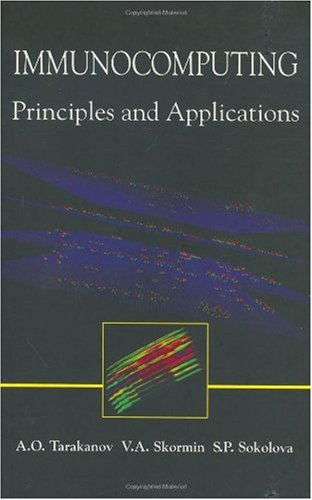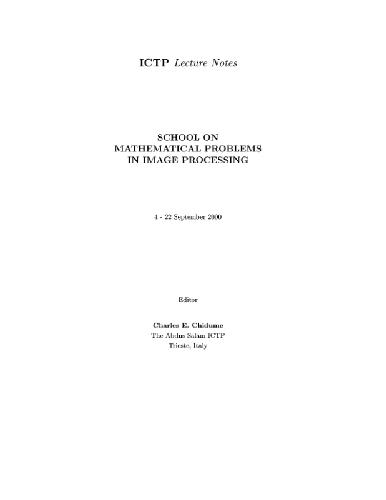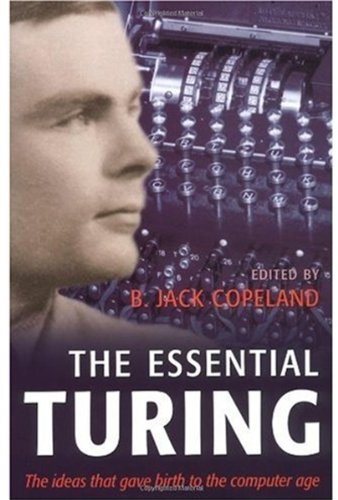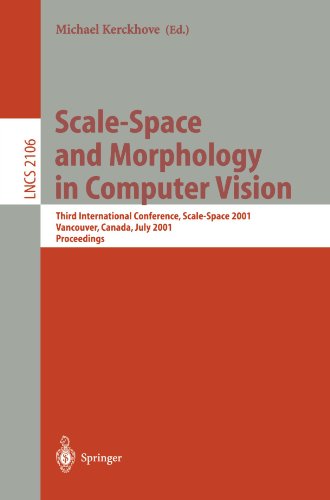Ahmad A.0306477939
Table of contents :
DATA COMMUNICATION
PRINCIPLES
For Fixed and Wireless Networks……Page 5
Copyright……Page 6
NOTE TO INSTRUCTORS……Page 7
Table of Contents……Page 11
Preface……Page 17
1. Computer Communications Networks – Introduction……Page 21
1.1.1. The Computer System……Page 22
1.1.2. The Communications System……Page 23
1.1.3.1. Communication Systems Versus Networking……Page 24
1.2.1. Three Role Players……Page 25
1.2.2. Network Design……Page 26
1.2.2.4. Relevance of the text to the above role players……Page 28
1.3.1. Example 1 – Communication of Voice……Page 29
1.3.2. Example 2 – File Transfer……Page 30
1.3.2.1. Circuit Switching……Page 31
1.4.2. Wide Area Networks ( WANs)……Page 32
1.5.2. Standards……Page 33
1.6. Example of a Protocol Architecture……Page 34
1.7. Summary……Page 35
1.8. Review Questions……Page 36
2. Network Architectures – Examples……Page 37
2.1.1. OSI- RM Characteristics and Terminology……Page 38
2.1.2. Communications Model within an OSI Node……Page 39
2.1.3. Communications Across the OSI Network……Page 42
2.1.4. Inter- layer communication……Page 43
2.1.4.1. The Role of the Lower Layers……Page 44
2.1.5.1. The Physical Layer……Page 45
2.1.5.2. The Data Link Control Layer ( DLC)……Page 46
2.1.5.3. The Network Layer ( NET)……Page 47
2.1.5.6. The Presentation Layer……Page 54
2.1.5.7. The Application Layer……Page 55
2.2. The TCP/ IP Protocol Suite……Page 56
2.2.1. The Internet Protocol ( IP)……Page 59
2.2.2. The Transmission Control Protocol ( TCP)……Page 60
2.2.4. Lower Layers of the Internet……Page 61
2.3.1. Local Area Networks……Page 62
2.3.2. Wireless Local Area Networks……Page 63
2.3.3. The Physical Layer ( PHY)……Page 65
2.3.4. The Medium Access Control ( MAC) Layer……Page 66
2.4. Framework for Studying a Protocol……Page 67
2.5. Standardization of Protocols……Page 68
2.5.2.1. Internet Architecture Board ( IAB)……Page 69
2.5.5. American National Standard Institute ( ANSI)……Page 70
2.5.6. Institute of Electrical and Electronic Engineers ( IEEE)……Page 71
2.6. Summary……Page 72
2.7. Review Questions……Page 73
3. Network and User Data……Page 75
3.1. The Network Data……Page 76
3.2.1. Sequence of Events and Definitions……Page 77
3.2.2. Modulation of data and signals……Page 87
3.2.2.1. Baseband and Passband Modulations……Page 88
3.2.3. Digital Encoding of Data……Page 90
3.2.4. Non- Return to Zero ( NRZ)……Page 91
3.2.5. Multilevel Encoding……Page 92
3.2.6. Manchester Coding……Page 93
3.2.7. General Characteristics of Bit Encoding……Page 94
3.2.8. Zero- substitution and nB/ NB Translation……Page 95
3.3.1. The Carrier Signal……Page 96
3.3.2. Analog Modulation……Page 97
3.3.2.1. Amplitude Modulation ( AM)……Page 98
3.3.2.2. Angle Modulation……Page 99
3.4.1. Amplitude Shift Keying ( ASK)……Page 100
3.4.2. Frequency Shift Keying ( FSK)……Page 101
3.4.3.1. Quadrature Phase Shift Keying ( QPSK)……Page 102
3.4.3.2. Signal Constellation……Page 103
3.5.1. Digital Transmission of Voice……Page 104
3.5.3. Pulse Coded Modulation ( PCM)……Page 105
3.5.4. Delta Modulation……Page 111
3.6. Text and Numerical Data……Page 113
3.6.1. ASCII ( American National Standard Code for Information Interchange)……Page 114
3.6.2. ISO 8859- 1 ( ISO Latin – 1)……Page 115
3.6.3. UCS ( Universal multiple- octet coded Character Set)……Page 116
3.7. Summary……Page 118
3.8. Review Questions……Page 119
4. The Physical Layer……Page 121
4.1.1.1. Attenuation and Propagation Loss……Page 122
4.1.2. Delay Distortion……Page 124
4.1.3. Noise……Page 125
4.1.4. Multipath……Page 126
4.2. Transmission Media……Page 127
4.3.1. Twisted Pair Copper Cables……Page 128
4.3.2. Co- axial Cable……Page 130
4.4. The Wireless Media……Page 131
4.4.2. Examples of Wireless Bands……Page 132
4.5. Physical Layer Protocol Example: EIA- 232- F……Page 133
4.5.1. Mechanical Characteristics……Page 134
4.5.3. Functional Characteristics……Page 136
4.5.4.1. Call setup for full- duplex connection……Page 138
4.5.4.3. Loopback Testing……Page 139
4.5.4.4. The NULL Modem……Page 140
4.5.5. PHY for IEEE Wireless Local Area Network……Page 141
4.5.6. WLAN Types……Page 142
4.5.7. Frequency Hopping Spread Spectrum ( FH- SS) for 2.4 GHz Specification……Page 143
4.5.7.1. PLCP for frequency hopping……Page 144
4.5.7.2. The PMD for Frequency Hopping Spread Spectrum……Page 145
4.5.8. Direct Sequence Spread Spectrum ( DS- SS) for 2.4 GHz Specification……Page 146
4.5.9. Infrared PHY for IEEE WLAN……Page 147
4.6. The Integrated Services Digital Network ( ISDN) PHY……Page 148
4.7. Review Questions……Page 150
5. Data Link Control Layer Functions and Procedures……Page 151
5.1.2. Addressing Modes……Page 152
5.1.6. Link Control and Testing……Page 153
5.2.1. Synchronous Transmission……Page 154
5.2.1.1. Bit Stuffing……Page 155
5.2.2. Asynchronous Transmission……Page 156
5.3. Connection Setup and Termination……Page 159
5.4. Addressing……Page 160
5.5. Error Control……Page 162
5.5.1. Parity bit……Page 164
5.5.3. The Cyclic Redundancy Check ( CRC)……Page 166
5.5.3.1. Parity block generation……Page 167
5.5.3.2. Error Detection Procedure……Page 168
5.5.3.3. Polynomial representation of binary numbers……Page 171
5.5.3.4. Implementation of CRC……Page 173
5.5.3.6. Error Detection Power of CRC……Page 175
5.6.1. Stop- and- Wait ( SnW) Flow Control……Page 176
5.6.2. The Sliding- windows ( SW) Flow Control Mechanism……Page 178
5.6.3. Link Utilization of Window Flow Control Mechanisms……Page 182
5.6.4. Full- duplex Communications Using Window Flow Control……Page 183
5.7.1. Stop- and- Wait ARQ……Page 184
5.7.2.2. Piggybacking……Page 185
5.7.3. Selective Reject ARQ……Page 186
5.7.4. Maximum Window Size……Page 187
5.8. Link Control and Testing……Page 188
5.9. Review Questions……Page 189
6. Data Link Control Layer Protocol Examples……Page 191
6.2. HDLC Frame Types……Page 192
6.4.2. Asynchronous Balanced Mode ( ABM)……Page 196
6.5.2. Address Field……Page 197
6.6. HDLC Protocol Operation……Page 198
6.6.2. Connection Setup and Termination……Page 199
6.6.3. Data Exchange……Page 200
6.6.3.1. Half- duplex Connection……Page 201
6.6.3.3. Use of REJ and SREJ……Page 204
6.7. Asynchronous Transfer Mode ( ATM) Protocol……Page 205
6.7.1.1. Generic Flow Control ( GFC)……Page 206
6.7.1.2. Virtual Path/ Channel Identifiers ( VPI/ VCI)……Page 207
6.7.1.3. Control Bits……Page 209
6.7.1.4. Header Error Control ( HEC)……Page 210
6.8.1. Virtual circuit and the frame relay protocol……Page 211
6.8.2. Error Control……Page 212
6.9. Medium Access Control ( MAC) Layer for IEEE Wireless LANs……Page 213
6.9.1. Random Access in LANs……Page 214
6.9.2. Collision Avoidance……Page 215
6.9.3. The Distributed Coordination Function ( DCF)……Page 216
6.9.4. MAC Frame Structure……Page 217
6.9.5. MAC Frame Types……Page 218
6.10. Review Questions……Page 220
7. Multiplexing and Carrier Systems……Page 221
7.1.1. Analog and Digital Multiplexing……Page 222
7.1.2. Frequency Division Multiplexing ( FDM)……Page 223
7.1.3. Frequency Division Duplexing ( FDD)……Page 224
7.1.5. Synchronous TDM……Page 225
7.1.6. Statistical TDM……Page 226
7.1.7. Statistical Versus Synchronous TDM……Page 228
7.1.8. The TDM Switch……Page 229
7.1.8.1. Framing……Page 230
7.2. Digital Carrier Systems……Page 231
7.3. The DS- 1 Carrier System……Page 232
7.3.2. Signaling Information……Page 233
7.3.3. Problems with T- 1/ E- 1 Systems……Page 234
7.4. Synchronous Optical Network/ Synchronous Digital Hierarchy……Page 235
7.5. Digital Subscriber¡¯s Line ( DSL)……Page 237
7.6. Multiplexing at higher layers……Page 238
7.6.1. Multiple Protocols Per Layer With Connection- oriented Mode……Page 239
7.6.2. Multiple Connections Per Protocol……Page 240
7.7. Review Questions……Page 242
8. The Network and Higher Layer Functions……Page 243
8.1. The Network Layer……Page 244
8.2.1. Connectionless Network Layers……Page 245
8.2.2. Connection- oriented Mode……Page 249
8.3. The End- to- end Layers……Page 250
8.4. X. 25 Packet Layer Protocol……Page 252
8.4.1. X. 25 Packet Types……Page 253
8.5. Review Questions……Page 256
9. Performance Models for Data Networks……Page 257
9.1. The Network Performance……Page 258
9.2. Performance of the Physical Layer Protocols……Page 259
9.2.1.1. Channel Errors……Page 260
9.2.1.2. Receiver Accuracy……Page 261
9.3. Data Link Layer Performance……Page 262
9.3.1. Flow Control Procedures……Page 263
9.3.2.1. Performance Models for FEC and BEC……Page 266
9.4. Performance of the MAC Sublayer……Page 268
9.5. Performance of the network and higher layers……Page 269
9.5.1. Connectionless and Connection- oriented Protocols……Page 270
9.5.2.1. Priority Queueing……Page 272
9.5.2.3. Custom Queueing……Page 273
9.5.3. Performance of End- to- end Protocols……Page 274
9.6.1. What is Simulation?……Page 275
9.6.1.2. The Uniform Random Variable……Page 276
9.7. Performance of Wireless and Mobile Networks……Page 277
9.7.1.2. Interference……Page 278
9.7.1.3. Frequency Selectiveness……Page 279
9.7.1.4. Time Selectiveness……Page 280
9.7.1.6. Diversity……Page 281
9.7.2. Resource Management in Wireless Networks……Page 282
9.7.3. Mobility Management in Mobile Networks……Page 284
9.7.3.2. Registration……Page 285
9.8. Review Questions……Page 286
References……Page 287
Index……Page 293







Reviews
There are no reviews yet.